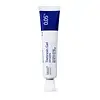Obagi Tretinoin 0.05% Gel Versus Obagi Retinol 0.5
What's inside
What's inside
 Key Ingredients
Key Ingredients

 Benefits
Benefits

 Concerns
Concerns

 Ingredients Side-by-side
Ingredients Side-by-side

Tretinoin 0.05%
Skin ConditioningBenzyl Alcohol
PerfumingButylparaben
MaskingBHT
AntioxidantCarbomer
Emulsion StabilisingEthylparaben
PreservativeHydrolyzed Collagen
EmollientGlycerin
HumectantIsobutylparaben
AntimicrobialMethylparaben
PreservativeOctoxynol-9
EmulsifyingPhenoxyethanol
PreservativePropylparaben
PreservativeWater
Skin ConditioningSodium Hyaluronate
HumectantTriethanolamine
BufferingWater
Skin ConditioningCaprylic/Capric Triglyceride
MaskingGlyceryl Stearate
EmollientCyclopentasiloxane
EmollientButylene Glycol
HumectantStearic Acid
CleansingPolysorbate 60
EmulsifyingButyrospermum Parkii Butter
Skin ConditioningGlycerin
HumectantStearyl Alcohol
EmollientCyclohexasiloxane
EmollientDimethicone
EmollientRetinol
Skin ConditioningCalendula Officinalis Flower Extract
MaskingCamellia Sinensis Leaf Extract
AntimicrobialChamomilla Recutita Flower Extract
MaskingDipotassium Glycyrrhizate
HumectantSodium Hyaluronate
HumectantTocopheryl Acetate
AntioxidantBisabolol
MaskingAscorbic Acid
AntioxidantCarthamus Tinctorius Seed Oil
MaskingSorbitol
HumectantGlyceryl Acrylate/Acrylic Acid Copolymer
HumectantDimethicone/Vinyl Dimethicone Crosspolymer
Skin ConditioningAllyl Methacrylates Crosspolymer
Emulsion StabilisingCaprylyl Glycol
EmollientEthylhexylglycerin
Skin ConditioningHexylene Glycol
EmulsifyingPolysorbate 20
EmulsifyingCarbomer
Emulsion StabilisingDisodium EDTA
Triethanolamine
BufferingBHT
AntioxidantPhenoxyethanol
PreservativeWater, Caprylic/Capric Triglyceride, Glyceryl Stearate, Cyclopentasiloxane, Butylene Glycol, Stearic Acid, Polysorbate 60, Butyrospermum Parkii Butter, Glycerin, Stearyl Alcohol, Cyclohexasiloxane, Dimethicone, Retinol, Calendula Officinalis Flower Extract, Camellia Sinensis Leaf Extract, Chamomilla Recutita Flower Extract, Dipotassium Glycyrrhizate, Sodium Hyaluronate, Tocopheryl Acetate, Bisabolol, Ascorbic Acid, Carthamus Tinctorius Seed Oil, Sorbitol, Glyceryl Acrylate/Acrylic Acid Copolymer, Dimethicone/Vinyl Dimethicone Crosspolymer, Allyl Methacrylates Crosspolymer, Caprylyl Glycol, Ethylhexylglycerin, Hexylene Glycol, Polysorbate 20, Carbomer, Disodium EDTA, Triethanolamine, BHT, Phenoxyethanol
Alternatives
Ingredients Explained
These ingredients are found in both products.
Ingredients higher up in an ingredient list are typically present in a larger amount.
BHT is a synthetic antioxidant and preservative.
As an antioxidant, it helps your body fight off free-radicals. Free-radicals are molecules that may damage your skin cells.
As a preservative, it is used to stabilize products and prevent them from degrading. Specifically, BHT prevents degradation from oxidation.
The concerns related to BHT come from oral studies; this ingredient is currently allowed for use by both the FDA and EU.
However, it was recently restricted for use in the UK as of April 2024.
Learn more about BHTCarbomer is a polymer of acrylic acid. Its main role is to create a gel consistency.
A high amount of carbomer can cause pilling or balling up of products. Don't worry, most products contain 1% or less of carbomer.
Glycerin is already naturally found in your skin. It helps moisturize and protect your skin.
A study from 2016 found glycerin to be more effective as a humectant than AHAs and hyaluronic acid.
As a humectant, it helps the skin stay hydrated by pulling moisture to your skin. The low molecular weight of glycerin allows it to pull moisture into the deeper layers of your skin.
Hydrated skin improves your skin barrier; Your skin barrier helps protect against irritants and bacteria.
Glycerin has also been found to have antimicrobial and antiviral properties. Due to these properties, glycerin is often used in wound and burn treatments.
In cosmetics, glycerin is usually derived from plants such as soybean or palm. However, it can also be sourced from animals, such as tallow or animal fat.
This ingredient is organic, colorless, odorless, and non-toxic.
Glycerin is the name for this ingredient in American English. British English uses Glycerol/Glycerine.
Learn more about GlycerinPhenoxyethanol is a preservative that has germicide, antimicrobial, and aromatic properties. Studies show that phenoxyethanol can prevent microbial growth. By itself, it has a scent that is similar to that of a rose.
It's often used in formulations along with Caprylyl Glycol to preserve the shelf life of products.
Sodium Hyaluronate is hyaluronic acid's salt form. It is commonly derived from the sodium salt of hyaluronic acid.
Like hyaluronic acid, it is great at holding water and acts as a humectant. This makes it a great skin hydrating ingredient.
Sodium Hyaluronate is naturally occurring in our bodies and is mostly found in eye fluid and joints.
These are some other common types of Hyaluronic Acid:
Learn more about Sodium HyaluronateTriethanolamine is an emulsifier and pH adjuster. It is created using ethylene oxide and ammonia. This gives Triethanolamine a nitrogen core and a similar scent to ammonia.
As an emulsifier, it prevents ingredients from separating and enhances texture by adding volume to a product.
PH adjusters are common in cosmetic products. The pH of a product can affect the effectiveness of other ingredients. A product with a high pH may also irritate the skin.
Learn more about TriethanolamineWater. It's the most common cosmetic ingredient of all. You'll usually see it at the top of ingredient lists, meaning that it makes up the largest part of the product.
So why is it so popular? Water most often acts as a solvent - this means that it helps dissolve other ingredients into the formulation.
You'll also recognize water as that liquid we all need to stay alive. If you see this, drink a glass of water. Stay hydrated!
Learn more about Water